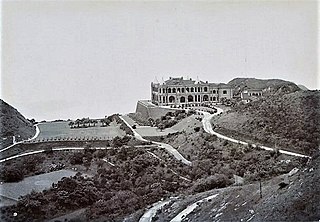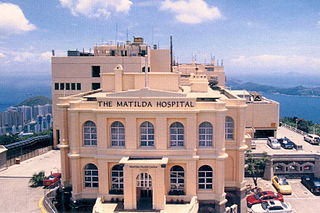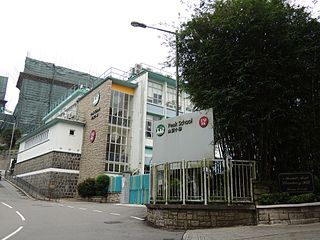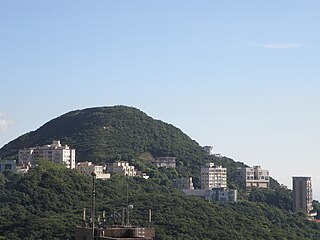1870 - 1886

In 1874, more sedan chair paths and wells were provided, and this created a building boom.
- [FL 53] Dunheved: In 1874, the site right at Victoria Gap (to become the site of Peak Hotel), was purchased by N.J. Ede. In 1875, Henry Davis bought a lot and, Robert Gervase Alford, son of the Bishop of Victoria also applied for a lot on the Peak.
- [FL 54] Austin Arms: John Gardiner Austin , Colonial Secretary of Hong Kong, chose a spot above Victoria Gap, facing Mt. Kellett. His friends, who came to visit, called it the Austin Arms. [7] In January 1875, Austin sent a request on behalf of nine Justices of the Peace, whose spokesman was acting Chief Justice of the Supreme Court, Mr. Justice James Russell, requesting that the land be sold to them, without the usual auction. He was roundly rebuked in an indignant reply reminding these justices, in no uncertain terms, that the duty of Government was to obtain the highest possible price for the land. [8] Austin left Hong Kong in 1878, [9] and James Russell moved into the Austin Arms.
- [FL 55 & 56]: Both in Wong Nai Chung.
- [FL 57] The Eyrie: [10] In late 1875 Charles May , [11] the first head of the Hong Kong Police, Fire Brigade and Goal (retired) [12] applied for a lot at the very top of Mt. Austin and his bungalow was finished two years later in 1877. He chose the spot right at the top opposite a spot that had been leveled by Baron von Overbeck with views both toward the harbour and Mt. Kellett. However, he died just four years later in 1879. [13] We do not know if it had a name then, but later it was called The Eyrie. The Eyrie was the highest home on the Peak. Chairman of the Hongkong & Shanghai Bank, E.R. Belilios, an Indian-born Jew and former holder of a monopoly licence to trade in opium purchased, in 1886, the bungalow built by Charles May in 1877 and then built a grand brick building, the "Eyrie". The house and front garden faced toward Pok Fu Lam, the back garden straddled the ridgeline facing the Harbour. A small open-air pavilion on the top of an adjacent hill had a 360-degree view.
- [FL 58]: Located above Ede's property at the Gap - and he bought it after first trying unsuccessfully to expand his land that direction. Originally owned by Murray Forbes.
- [FL 59] The Homestead: Granville Sharp on Mt. Kellett was purchased in 1876. The Sharps lived there for 25 years. Homestead Road on Mt. Kellett is named after the house.
- [FL 60 & 61] The Haystack: Owned by Mr. Anton, and the house on the property still has the same name today. It now serves as the official residence of the Consul-General of Japan in Hong Kong. [14]
- [FL 62] Treverbyn: also bought by Mr. Ede (became Peak Mansions in the 1929)
- [FL 63] Admiralty Bungalow: above Victoria Gap
- [FL 64] Rockyda: on Mt. Kellett - 1884 Mr. Ackroyd (became RBL 53 - Des Voeux Villas - 1888 James Orange)
- [FL 65] Myrtle Bank: on Mt. Kellett (became RBL 65)
- [FL 65] on Caine Rd.
- [FL 67] Cronest: Dr. Manson - on the ridge of Mt. Gough - (became RBL 60, and the houses of Mountain View)
- [FL 68]
- [FL 69] Belvedere: 1882 Dr. Adams
- [RBL 1]
- Brockhurst: Henry Lardner Dennys;
- Kirkendoa: Henry Lardner Dennys - 1897-8;
- Hilden: A. Bryer 1912;
- The Bracket: Alfred Bryer - 1914-15
- [RBL 2]
- Fung Shui: E. BowdlerAssistant Surveyor General
- Abergeldie: 1891-2
- [RBL 3] combined with RBL 2
- [RBL 4] The Cliff: Dr. Adams (combined with FL 69 in 1882 to make RBL 27 by)
- [RBL 5] Craigieburn
- [RBL 6]
- Hillside
- Clavadel: Clement Palmer - 1893
- Haytor
- Strawberry Hill: with part on RBL 8
- [RBL 7] Cloudlands
- [RBL 8]
- Creggan
- Strawberry Hill (with part on RBL 6)
- [RBL 9] The Sheiling (became Stewart Terrace)
- [RBL 10] The Mount 1883 - Mr. Johnson
- [RBL 11] Craig RyrieP. Ryrie
- [RBL 12]
- [RBL 13]
- [RBL 14] Bushy Cottage (became Red Hill)
- [RBL 15] Stokes Bungalow
- [RBL 16]
- Kellett Bungalow,
- Kellett Spur, and
- Oeonora became Matilda Hospital
- [RBL 17]
- [RBL 18]
- [RBL 19] Leigh TorRobert Kenaway Leigh, 1885-86 (now Chief Justice's house)
- [RBL 20] Dunottar
- [RBL 21] La Hacienda: A large house on Mount Kellett Road, which, as the name implies, was built in the old Spanish Colonial style of three wings round a central courtyard. It was commissioned by George Benjamin Dodwell (1851–1925) in the 1890s, who founded the trading company Dodwell & Co. in 1891. He lived there with his wife Julia (née Simms) and family of two sons and four daughters, two European governesses and a Chinese staff of 24.
- [RBL 22]
- [RBL 23] Peak Church
- [RBL 24]
- [RBL 25] The Bluff
- [RBL 26] C.M.S. Sanitorium
- [RBL 27] The Cliff
- [RBL 28] The Falls
- [RBL 29] Bangour
- [RBL 30] (combined with RBL 31)
- [RBL 31] Dunford & The Chalet
Others built. So many, in fact, that there were enough people disinclined to make the trek down the hill and up again a Sunday to the Cathedral, that a wee Anglican chapel of ease, The Peak Church, was built in 1883. It was nicknamed the "Jelly Mould". [15]
With the growth of the district, the Police built a new station on Gough Hill (the same site it is on today).



















